Common name: common lime
Scientific name: Tilia x europaea
Family: Malvaceae
Origin: native
At home on a country estate or deep in the wild, this lime is common in name only. It’s a hybrid between the small-leaved and large-leaved lime, and is a particular favourite of aphids and their many predators.
Common name: common lime
Scientific name: Tilia x europaea
Family: Malvaceae
Origin: native
A hybrid between small-leaved and large-leaved lime, common lime has characteristics of both species. The bark is pale grey-brown and irregularly ridged, with characteristic large burrs and leaf shoots at the base of the tree. Twigs are slender and brown, although they become red in the sun.
Look out for: the heart-shaped leaves which have white-cream hairs in the base of the vein on the underside.
Identified in winter by: the red twigs which are hairy. The red-pink buds are longer than 4mm and only have 2–3 scales.
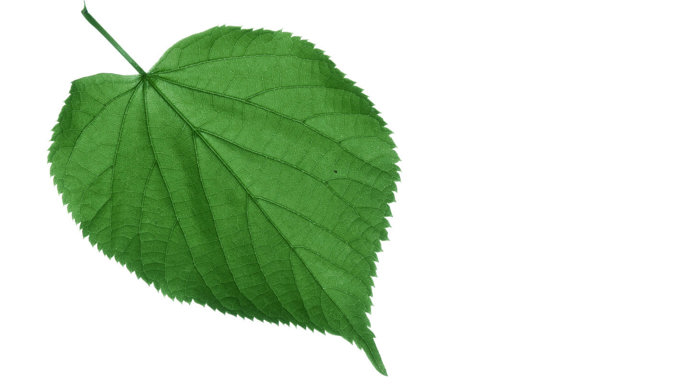
Credit: Nature Photographers Ltd / WTML
Leaf buds are red, with one small scale and one large scale, resembling a boxing glove, and they form on long leaf stalks.
The leaves are dark green, heart-shaped and flimsy, measuring 6–10cm in length. They are lopsided and lobed at the base. Leaves are more or less hairless, except for creamy-buff or white hairs on the underside of the leaf between the joints of the veins. In autumn, leaves fade to a dull yellow before they fall.
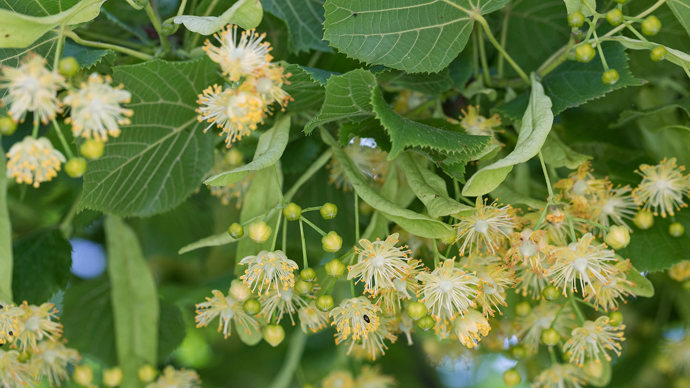
Credit: Frank Hecker / Alamy Stock Photo
Limes are hermaphrodite, meaning both the male and female reproductive parts are contained within one flower. Flowers are white-yellow with five petals and hang in clusters of 2–5.
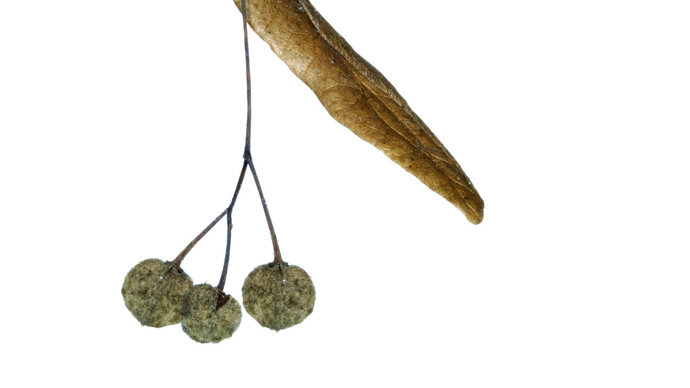
Credit: Nature Photographers Ltd / WTML
Once pollinated by insects, the flowers develop into round-oval, slightly ribbed fruits, with a pointed tip.
Other limes and hybrids. It is possible to tell true species apart by looking at the underside of the leaf. Common lime (Tilia x europaea) has tufts of white hairs at the end of twigs, whereas in small-leaved lime (Tilia cordata) these are rusty red. Large-leaved lime (Tilia platyphyllos) has hairs all over the underside. Common lime is a hybrid and is rare in the wild in the UK.
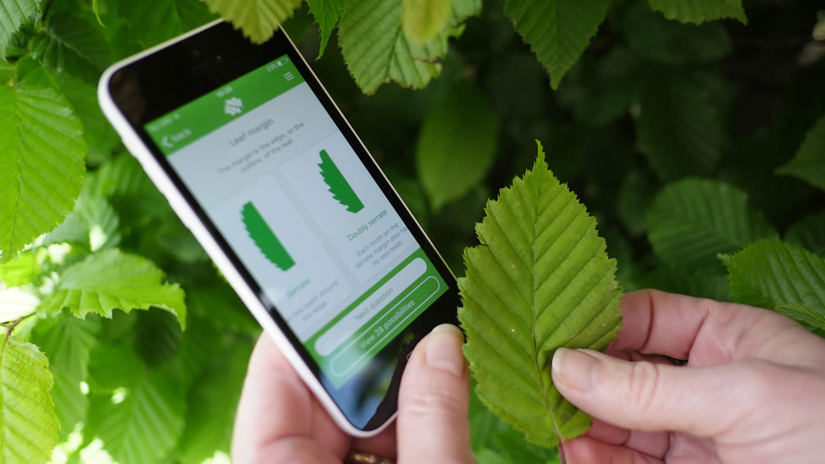

Download our free Tree ID app for Android and iPhone to identify the UK's native and non-native trees. It's an A-Z tree guide in your pocket.
Common lime is native to much of Europe, including the UK, and occurs in the wild in scattered areas wherever the two parent species are located. It is more common in urban areas and parks.
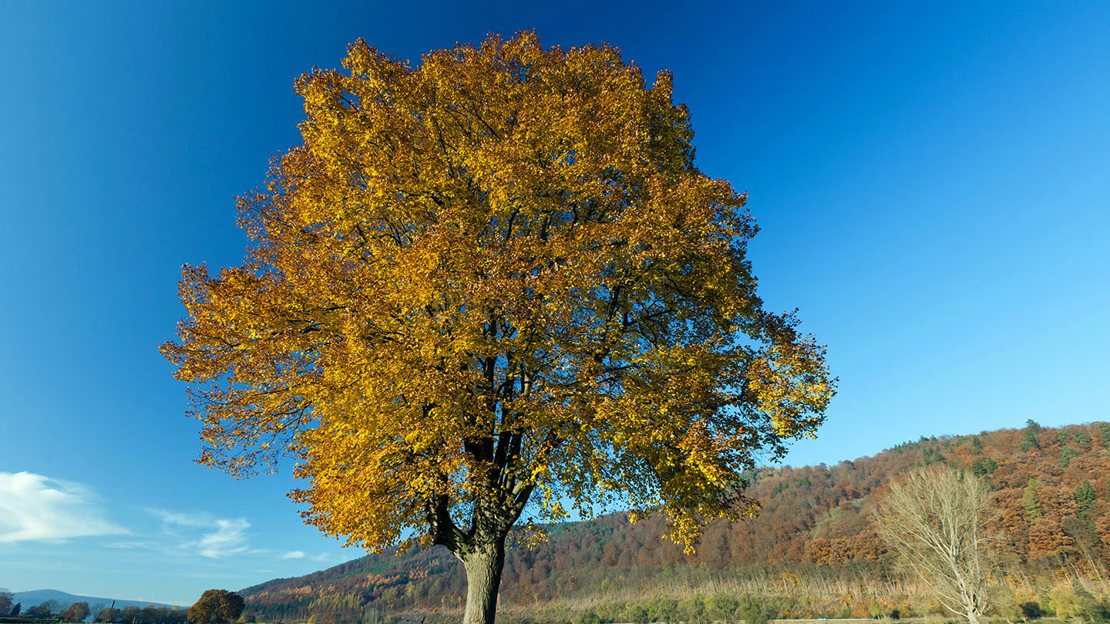
Common limes are often host to heavy aphid populations which drip sticky honeydew deposits on anything lying underneath the trees.
Lime leaves are eaten by the caterpillars of many moth species, including the lime hawk, peppered, vapourer, triangle and scarce hook-tip moths. They are very attractive to aphids, providing a source of food for their predators, including hoverflies, ladybirds and many species of bird. Bees also drink the aphid honeydew deposited on the leaves. The flowers provide nectar and pollen for insects, particularly bees.
Long-lived trees provide dead wood for wood-boring beetles, and nesting holes for birds.
Limes have long been associated with fertility. In France and Switzerland, limes are a symbol of liberty and the trees were planted to commemorate battles.
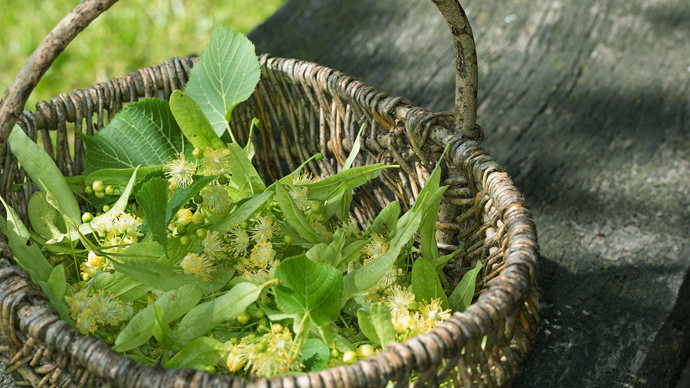
Credit: Frank Hecker / Alamy Stock Photo
Lime wood is soft and light, white-yellow and finely textured. It is easy to work and often used in wood turning, carving and furniture making. Lime bark was traditionally used to make rope, and lime flowers were considered a valuable source of food for honey bees. The wood does not warp and is still used today to make sounding boards and piano keys. Limes can be coppiced and used for fuel, hop-poles, bean sticks, cups, ladles, bowls and even Morris-dancing sticks. The most common use of common lime is as an ornamental tree.
In Finnish folklore, limes are trees of protection.
Lime trees may be susceptible to fungal disease which can cause root rot and bleeding cankers. Trees can also suffer infestations of aphids, sap-sucking insects and gall mites, including the nail gall. Occasionally they are affected by wilt, which can be fatal.